I thought I was doing pretty well with my three garbage bins lined up in the kitchen. One for general waste; one for paper and cartons; and one for PET plastic, aluminium, and glass. No need thus to worry about how to improve recycling. The only thing I thought was maybe I should get a kitchen compost bin. Yet like many of my eco-friendly thoughts, this idea never materialised. In my busy life with my three musketeers, it just seemed to complicate everything too much. This last week taught me, however, that I could take some steps towards proper recycling. Beyond just buying a kitchen compost collector.
After having explored online how to improve recycling, the 7 changes that I introduced last week were:
- Downloading a recycling app and looking up guidelines for proper disposal when in doubt
- Learning the meaning of recycling signs on the product. Looking on the packaging to decide where and how it goes (e.g. what to do with tetra paks, whether things needed to be washed, how to dispose of lids)
- In order to avoid throwing recyclable materials into general waste bins while outside, keeping things with me until I can recycle them in the collection points in the city or at home
- Recycling with my children in a fun way
- Avoiding throwing useful things away before I have tried to give them away
- Reading Geneva and French recycling policies and visiting waste collection points
- Installing a compost bin in the kitchen and using it
RECYCLING APP AND PROPER DISPOSAL FOR RECYCLING
On Internet I found a list of recycling apps for many countries worldwide. Yet my first attempt to download an app was not successful, as I opted for one that turned out not to be for France at all… Finally, for France, I decided to use Guide de Trie application.
Thanks to this app and to some more readings on internet, I corrected several recycling mistakes that I was making. For instance, I had not recycled tetra paks of juices, soups, or creams, as I thought they were dirty and contained plastic. Yet I learned that tetra paks could be recycled thanks to special techniques that separate carton, plastic, and aluminium. Moreover, there is no need to wash tetra paks before disposing of them. Another mistake that I used to make was to throw away packaging that was half plastic and half paper. Like many bread bags. Now I separate out the plastic and recycle the paper. I also know that the best way is to put the lids back on Tetra paks before putting them into recycling container.
Guide de Trie also taught me the best place to give away clothes that I do not use and also those that are damaged. The app referred me to La Fibre du Tri website, where I learned that not all collection points also recycle clothes. The used clothes should be given to collection points that have this logo in France:
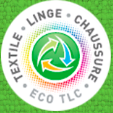
RECYCLING WITH KIDS AND FRIENDS
Many websites propose activities to do with children to get them used to recycling. One of my favourites is Katie Chiavarone’s 19 activities for kids to learn about recycling. To start, though, I used a very simple method. I took kids’ gardening gloves, some dog poop bags, and an empty paper bag with me when I walked to meet the kids at school. On our walk back home, I invited them to pick up all the litter they saw and put it into the paper bag. Then, at home, we made a pile that we sorted by materials, then put each type of litter into the appropriate recycling bin. This was so much fun for all of us, and in particular, my 4-year-old loved it!
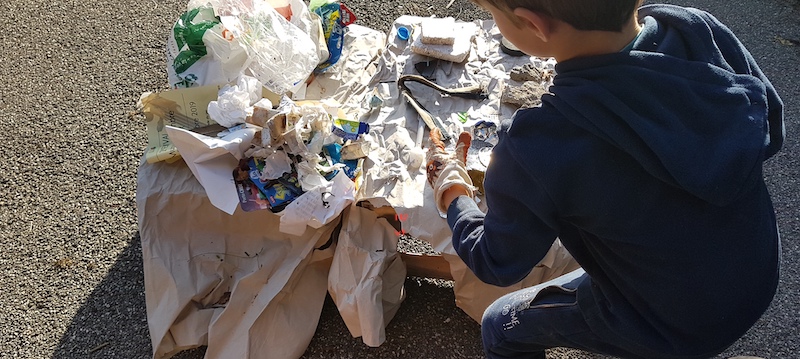
The activity was useful in many ways – we cleaned the litter, reduced plastic waste in nature, and sorted for recycling! And boys also learned about various materials, different forms plastic and metal could take, etc.
Another day I decided to give away some rather new or totally unused things, like some cosmetic products that I had received but did not use, to some of my friends. In the past, I usually never did that, and the products expired so I had to throw them away. I somehow felt uncomfortable giving my things away, perhaps anticipating a rejection or fearing that I would offend someone. Yet every time people give me their things they do not use anymore, I feel happy. So I dared to start with a dear friend, and she was glad to take many of the things that I had to give!
GENEVA AND FRENCH RECYCLING SYSTEMS IN PRACTICE
Our professional lives are more connected to Switzerland, but our house is in France. Since we navigate both spaces, I needed a better understanding of the recycling rules in each environment. For the city of Geneva, I found this official link with concise and useful advice on sorting and recycling household waste (Tri et recyclage des déchets ménagers). When in Geneva, I try to avoid throwing litter into one of the yellow garbage bags. Instead, I walk to one of the closest collection points, which are available in many places in Geneva. If I do not know one close by, I just keep the litter with me and dispose of it at home.
As to the neighbouring France, I used consignesdetri.fr. For learning the meaning of various recycling signs on products, the following blog post Comprendre les logos de recyclage on www. Jedeviensecolo.fr was really helpful.
KITCHEN COMPOST
And yes, I got a kitchen compost container finally! I used to have many reservations about whether to place a compost bin in the kitchen. For instance, I feared that it would smell. I also didn’t see any beautiful options in the shops where I usually went. Moreover, I worried that I’d be too lazy to walk about 200 meters to empty it to our outdoor compost. And I feared that it would attract more insects or rodents indoors, and I felt reluctant to wash it.
I am glad that I overcame these hesitations and learned that many of my fears were not grounded. For example, I found a stylish kitchen compost container that does not smell and could be put into a dishwasher! And at least in this first week, it does not seem to have brought insects or rodents inside. Among my meditation techniques is morning walk in my garden with my dog, so taking this beautiful compost bin along did not make me resentful. This may change in winter though… let’s see 🙂
CHALLENGES
Recycling with toddlers and preschoolers
Before, we used to have a separate recycling bin for glass in the kitchen. Yet this became dangerous when Rick, our youngest, started to walk. For a while, his favourite pastime was to open the recycling bins and to take everything out. This remained rather innocent when he was only playing with paper and PET plastic, but using glass bottles to juggle was not at all to our liking. Later, Rick found a different game: he liked to push the recycling bins around the kitchen and living room, making a lot of noise, and then forgetting them, for instance, in front of our TV or fireplace. So when I introduced the compost bin, he was curious for a few days, and he constantly opened it and tried to bring to the living room.
On a positive side, though he is not yet two years old, Rick is already quite fluent in recycling and knows where to run with an empty milk bottle or a piece of paper! And fortunately, his keen interest in opening and moving these bins has lessened lately.
Washing my recycling bins
I do not like to wash my garbage bin, and I think I am not alone. Having more recycling bins means more washing. And most of these (except my little new compost bin) are way too big to be put into dishwasher! I have not yet found a solution to this challenge. I still usually put the washing off for as long as I can – until something is spilled over inside the container, or when I open the lid and the smell is just killing me!
HIGHLIGHTS AND TIPS OF THE WEEK
By far for me the biggest highlight was to see that
· My kids are becoming more eco-friendly surprisingly quickly, and they are masters of sorting the waste for recycling!
Just few days after I had installed the kitchen compost and started the sorting-the- litter game with our kids, our four-year-old Max stopped my husband Jim, who by habit wanted to through banana peels to general waste. He corrected Jim by saying, “Papa, these peels go to another bin!” I must say that I was very proud of our Max! While we were picking up litter on our way home, Max also stopped me at one point and said: “Mom, look how beautiful flower!”

Another highlight of the week was that after just few hours of reading on recycling,
· I felt so much less foggy about recycling!
In general, since starting this green journey, similarly to the first months when I quit smoking, most of the days I feel so alive and good about myself! I know that I am on the right path, and I am grateful that I am surrounded by many people supporting my journey!




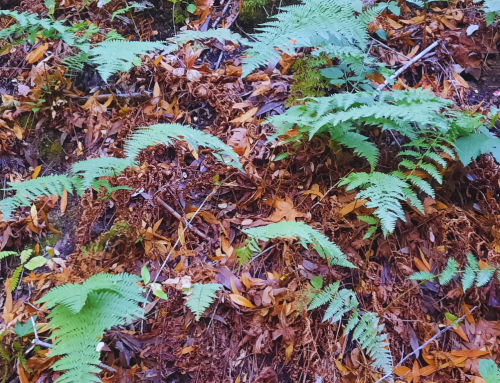

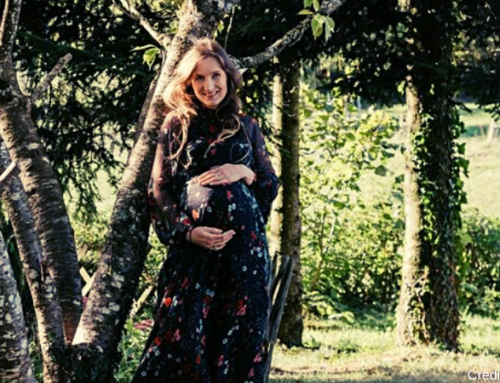

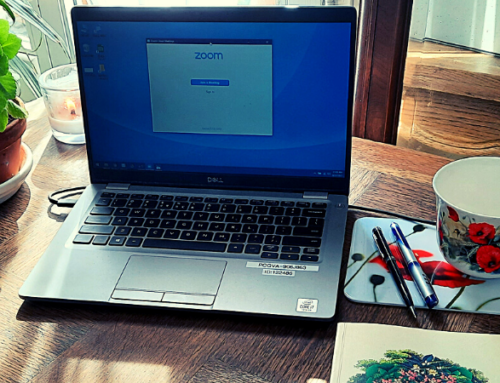
re: washing/smell of the bins – could you use bin liners there?
in our borough in London, we get special garbage bags for recycling waste (green, transparent, you need to put them out on garbage day and the collectors check that everything in there is recyclable), and I use these bags as bin liners. never had to wash or even wipe down that bin in 6 years. but also anything that goes in that bin either has to be empty and clean by definition or I choose to rinse things off first (for instance a beer bottle or a yoghurt pot). as only clean and dry (more or less) things go in that bin, I can afford also not even having a lid on it.
Thank you Kitty for sharing your experience and great tips! I will see if I can find also such bin liners here and I for sure have to make more effort in recycling cleaner items :-)!
Great actions. Very inspiring!!! I love how your boys participate and grow very naturally into how to do an effort to preserve our beautiful planet.
The most important thing I have to say about recycling is, that it starts when I buy things. I’ve a complete new approach to consume anything, food, clothes, electronic devices, furniture, just everything. My young adult daughters take more time to adopt my way of consuming since they don’t live with us anymore, but they still get inspired as I go.
I’m separating litter since many years and when we moved in 2006 into our house, the kitchen was equipped with different bins.
When it comes to food, I grow my own vegetables during sommer. When I have to buy vegetables and fruit during winter, I go to the market. There are no bags anymore. All goes into my backpack – since I go there on bike.
I have found Shops where one can buy cereals, pasta, oil etc. in bulk (en vrac). So I bring little tissue bags and old bottles to be filled.
I tempt to buy used clothes and when my daughters were little, my sister and friends passed their children’s clothes on to us. There are many interesting shops in Geneva. For our used clothes, I always give them to friends or a charity association.
Since I do permaculture, I can recycle the paper in my garden, even clothes and books can be implemented in a compost. I must say, that I haven’t had the courage to do that yet, paper yes but not the rest :):).
For the kitchen compost, it goes mostly to our outdoor compost.
However, I’ve bought a compost that remains inside the house. I works with worms. The soil and juice they produce are powerful fertilizers for indoor and outdoor plants.
Another in-house compost option is Bokashi. I have no experience with that.
Looking forward to reading more from your blog!!!
Hello Maya, Thank you so much for sharing your experiences – you have implemented so much into your daily life already! I also start to see that we need to be much more careful regarding our overall consumption – do we really need to buy the thing I want? If yes, can I buy it second-hand? And then to look at the materials it is made of. What you write about recycling paper in your garden is totally new for me – I would love to hear more about it!
Hello Nika, tx for sharing! Indeed the biggest changes at home I have noticed are from 2 things:
1) Having a little composting box for fruits/vegetables etc., which you take out, has halved the amount of “grey” garbage our family actually needs to take out, that’s a lot less that goes to landfill and less work+money too.
2) We finally found some Biological/Organic milk sold in Cardboards rather than PET. And as we consume 1.5L milk per day, that means about 10L less plastic PET per week. Paper is way easier to recycle and much less bulky so means less trips to recycling unit too.
Love,
Jim
Thank you Jim for your feedback! It is great to get your perspective on the changes that I try to implement and what you think are the most impactful!